What is the name given to the pieces of the lithosphere that move around on top of the asthenosphere?
Tectonic Plates
Who created the theory of Continental Drift?
Alfred Wegener came up with the theory that all the continents were once joined.
What is a Mid-Ocean Ridge?
A Mid-Ocean Ridge is an underwater mountain system
What is an ecosystem?
An ecosystem is a biological community of interacting organisms and their physical environment.
Draw a food chain with at least 4 organisms.
Example must show flow of energy and include producer and consumers (can include decomposer)
What are "hotspots" in geology?
Volcanic "hotspots" are places where rocks melt in the asthenosphere to create magma, which rises through cracks in the plates and erupts to form volcanoes.
What is the name given to the original continent according to Continental Drift theory?
Pangea or Pangaea
What are two pieces of evidence that can be used to support the theory of Continental Drift?
Any 2 of the following:
Aligning of the continents (jigsaw theory)
Matching plant or animal fossils on different continents
Matching rock formations
Climate clues (ancient climates different to now)
Describe in your own words what seafloor spreading means.
Seafloor spreading is caused by tectonic plates moving away from each other. Instead of being a hole, the space is filled with magma, which cools to makes new crust.
List 3 factors that can impact the balance of an ecosystem
Can include topics such as -
Natural disasters (bushfire, flooding, earthquake, etc)
Human impacts (deforestation, pollution, etc)
Introduced species/Extinction
Describe the predator-prey relationship
A predator is an organism that eats another organism. The prey is the organism which the predator eats. Some examples of predator and prey are lion and zebra, bear and fish, and fox and rabbit.
Describe in your own words what the image below represents.

The image represents the Ring of Fire, a ring of volcanoes around the Pacific Ocean plate that results from plate movement (subduction of oceanic plates beneath lighter continental plates).
Compare and contrast the difference between 'biotic' and 'abiotic' factors
Biotic factors are all of the living organisms within an ecosystem. These may be plants, animals, fungi, and any other living things. Whereas abiotic factors are all of the non-living things in an ecosystem, such as water, sunlight, oxygen, soil and temperature.
Explain the concept of subduction
Subduction is when two plates converge, one plate moves under the other and part of the lower plate goes back into the mantle (asthenosphere).
Illustrate how mountain ranges are formed (include brief description)
When tectonic plates converge, one plate is being pushed up as plate underneath moves/pushes it. Land is then pushed up when subduction occurs.
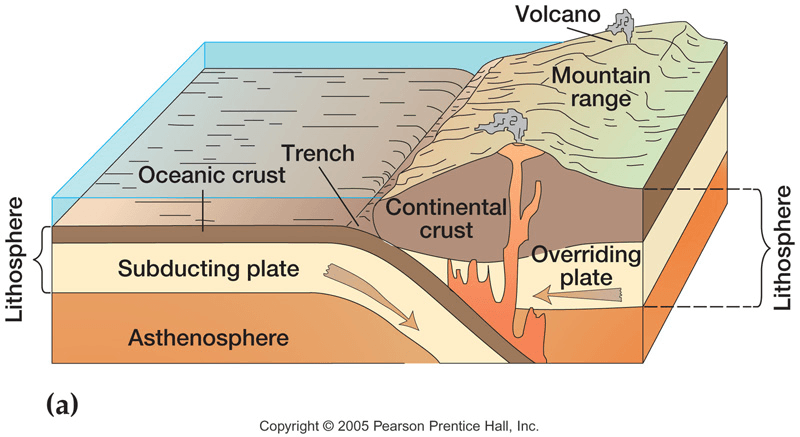
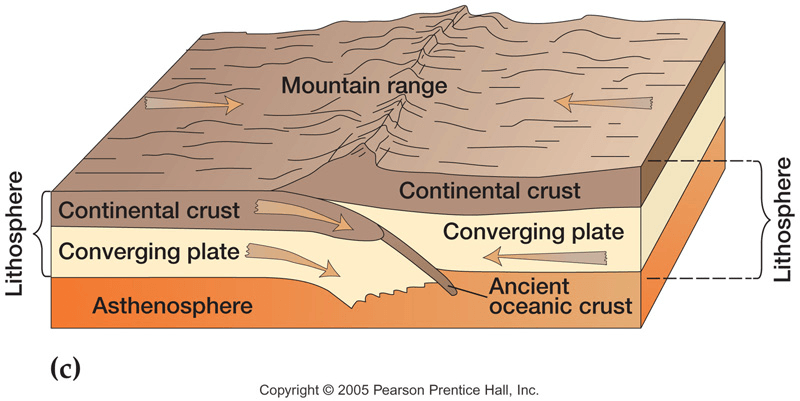
Give an example of a positive impact from bushfires
Examples can include -
Make seeds germinate, clearing undergrowth, clears thick growth so sunlight can reach the forest floor and encourage the growth of native species and adaption.
What are the trophic level/s of the fox in this food web?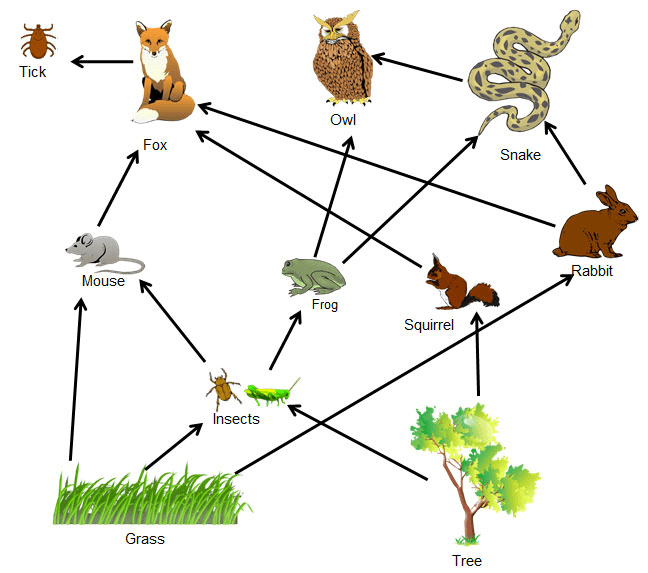
Level 2 and 3
Give an example of a parasitic relationship and explain the impact on both organisms.
Examples of Parasitism: Fleas or ticks that live on dogs and cats are parasites.
Parasitic relationships occur between two different organisms where one of the organisms actually harms the other through the relationship. The organism that is harming the other one is called a parasite.
Explain the difference between the 'Plate tectonics' and 'Continental Drift'
The difference between continental drift and plate tectonics is that the theory of continental drift states that the world was once made up of a single continent. The theory of plate tectonics, on the other hand, states that earth's surface is broken into a number of shifting plates or slabs.
Locations that experience more earthquakes are usually located at the edge of plate boundaries or fault lines. When the plates collide or move against one another it causes movement in the Earth. Volcanic activity can also cause the Earth to shake. Examples include areas such as New Zealand, California, Mexico, Indonesia and other sites located on the 'Ring of Fire'
Explain the concept of Glacial Striations
Glacial striations are usually multiple, straight, and parallel grooves created in rock, caused when large boulders or rocks are dragged beneath glaciers over the surface of the earth.
How can you explain symbiotic relationships? Provide example.
Any type of close or long term biological interaction between 2 different biological organisms where one or both are benefitting.
Examples - Shark and remora fish (commensalism), bee and flower (mutualism).
What factors determine the difference between an autotroph and a heterotroph?
Autotrophs make their own food whereas heterotrophs rely on autotrophs or other heterotrophs to get their food.
Design a scenario to explain what has caused the situation in the diagram.

An earthquake has been caused by rock underground breaking along a faultline, causing seismic waves that make the ground shake. When the two plates rubbed against each other, catching and causing the rocks break more because of pressure build up. When the rocks break, an earthquake occurs. The spot underground where the rock breaks is called the focus of the earthquake. The place right above the focus (on top of the ground) is called the epicenter of the earthquake and seismic waves radiate from it.
Describe the events that might occur or has occurred with plate movement in the diagram below (may want to reference Wilson Cycle)
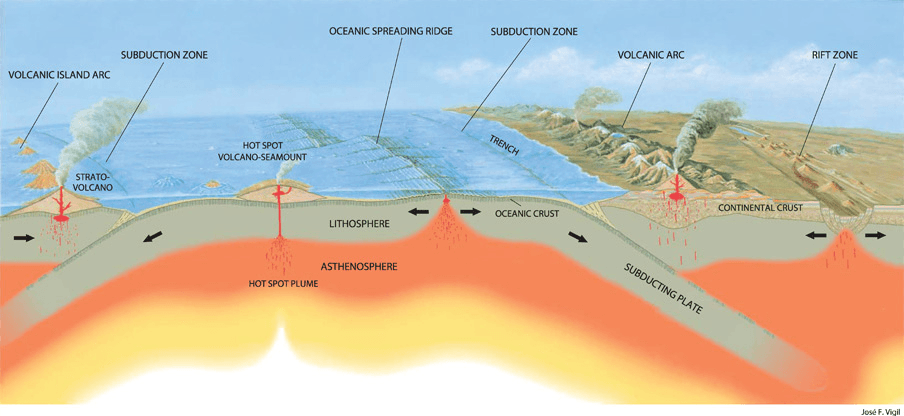
Responses should include some of the processes that can occur with plate movement, whether this be diverging plate forming new lithosphere, converging plates destroying land and creating volcanic activity, etc.
The Wilson cycle theory describes how these plates may rift into pieces, diverging apart and forming a new ocean basin, followed by motion reversal, convergence back together, plate collision, and subsequent mountain building.
Describe the type of relationship shown and explain in terms of benefit received.
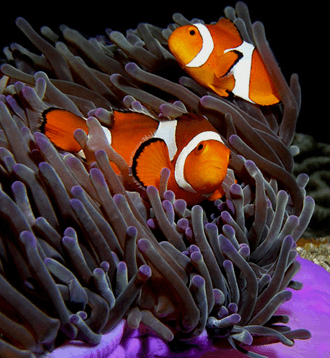
The relationship between Clownfish and anemones is a well-known example of commensalism. The clownfish live in the stinging tentacles of sea anemones to stay safe from predators. They have adapted so that they are coated in mucous which protects them from the anemone's stinging tentacles. A sea anemone makes an ideal home for a clownfish, but receives no direct benefit or disadvantage.